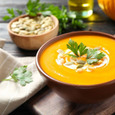The Spice Trade has undoubtedly played an integral role in shaping the global culinary landscape, introducing diverse and exotic flavors to far-flung corners of the world. From the pungent aroma of cardamom to the fiery taste of chili peppers, these spices have not only tantalized our taste buds but also connected civilizations across time and space.
The Early Beginnings of the Spice Trade
To understand the significance of the Spice Trade, we must travel back in time to ancient civilizations. The quest for spices can be traced back to Mesopotamia, Egypt, and the Indus Valley, where they were considered highly prized commodities. These regions became the focal points of early spice trading, acting as crossroads for different cultures exchanging these precious goods.
Spice Islan ds: The Epicenter of the Spice Trade
During the medieval period, the Spice Islands emerged as the epicenter of the Spice Trade. These islands, located in the Indian Ocean, were abundant with valuable spices like cloves, nutmeg, and cinnamon. Arab traders controlled the routes, making immense profits by monopolizing the spice trade. These valuable commodities were not only used for culinary purposes but also for their medicinal properties.
The Role of the Silk Road
The rise of the Silk Road in the 2nd century BCE further facilitated the flourishing spice trade. This ancient network of trade routes connected East and West, allowing an exchange of goods and ideas. Spices from the East, including ginger, turmeric, and black pepper, traveled along this route to reach the Western markets. These spices not only added a new dimension to European cuisine but also fueled the exploration for new routes to the East.
European Exploration and the Age of Discovery
The Age of Discovery in the 15th and 16th centuries opened up a whole new chapter in the history of the Spice Trade. European powers, such as Portugal, Spain, the Netherlands, and England, embarked on ambitious voyages to find new trade routes to the spice-rich lands of the East. The successful circumnavigation of the globe by Ferdinand Magellan further solidified the significance of spices and inspired more explorers to embrace the spice-driven trade.
Impact on Global Cuisine
The impact of the Spice Trade on global cuisine cannot be overstated. The introduction of spices not only improved the taste and variety of local dishes but also led to the creation of entirely new culinary traditions. Indian curries, Thai stir-fries, Moroccan tagines, and Mexican mole sauces all owe their complex flavors to the spices that once traveled along the ancient spice routes.
Conclusion
The Spice Trade holds a unique place in history as it not only shaped the world of flavors but also influenced cultural exchange and exploration. From the early trading routes to the Age of Discovery, the quest for spices played a vital role in connecting civilizations and expanding culinary horizons. So, the next time you savor the rich flavors of spices, take a moment to appreciate the ancient roots and global impact of this fascinating trade.
































































